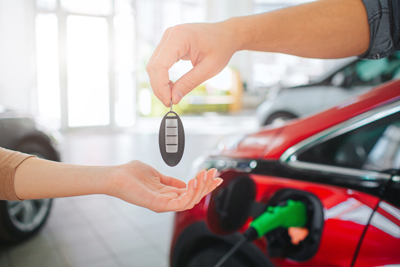California was by far tops in the U.S. in EVs' share of total passenger vehicle sales through the first six months of the year.
While EV adoption is on the rise nationwide, EV market share is far from being homogenous, as pointed out by BloombergNEF's latest research that takes a detailed look at the speed of adoption across all U.S. states.
The paper revealed the share of passenger EV sales in the U.S. exceeded 7.5% in 2022 as major automakers including Tesla, GM and Hyundai-Kia offered a wider selection. A total of 972,000 EVs were sold in the U.S. last year, up from 652,000 the year before.
Things are looking even better in the first half of 2023 as the EV share of car sales rose to 9%, stimulated partially by the implementation of the Inflation Reduction Act that introduced new subsidies for consumers, carmakers and battery producers.
If the trend continues, BloombergNEF forecasts EV sales to make up 23% of total U.S. passenger car sales in 2025 and 51% by 2030.
Until that happens, current EV share of passenger vehicle sales data at state level for the first half of 2023 highlights some stark differences between states. Unsurprisingly, California recorded the highest EV share of total car sales, with 25% of all vehicles sold in 1H 2023 being electric---nearly three times the national average.
Washington comes closest to California with an EV share of 18%, followed by Oregon with 17%. Several states have already broken the key milestone of 10% EV share of passenger vehicle sales, including Hawaii (15%), Nevada (14%), Colorado (13%), New Jersey (13%), Massachusetts (11%), Virginia (10%) and Maryland (10%).
The lowest electric share of the 20 states where data was available was in Ohio (4%), but it's worth noting the states in the list are among the largest automotive markets in the U.S., which means there are many other states with a much lower electric share.
Why does the 10% EV share matters? BloombergNEF said this has been seen as the point at which EV sales begin to significantly accelerate. For example, California surpassed 10% market share in 2021, ending the year at 13%. A year and a half later, the electric share has almost doubled for the Golden State. Granted, California is a special case, but if the runner-up states have a similar evolution, the share of EV sales may explode nationwide in the next few years.
The study also offers insight into another important factor, EV fleet penetration---the percentage of EVs in a state's passenger vehicle fleet. While EV sales are on the rise, things don't look so good nationwide as battery-electric vehicles make up only a tiny part of the U.S. passenger car fleet: 1.2% at the end of 2022.
Among leading states, California once again is on top with 3.5%, followed by Washington, DC (2.8%), Hawaii (2.4%) and Washington (2.0%). These are positive results, but they also highlight how much more room for growth EVs have, even in an EV-friendly state like California.














